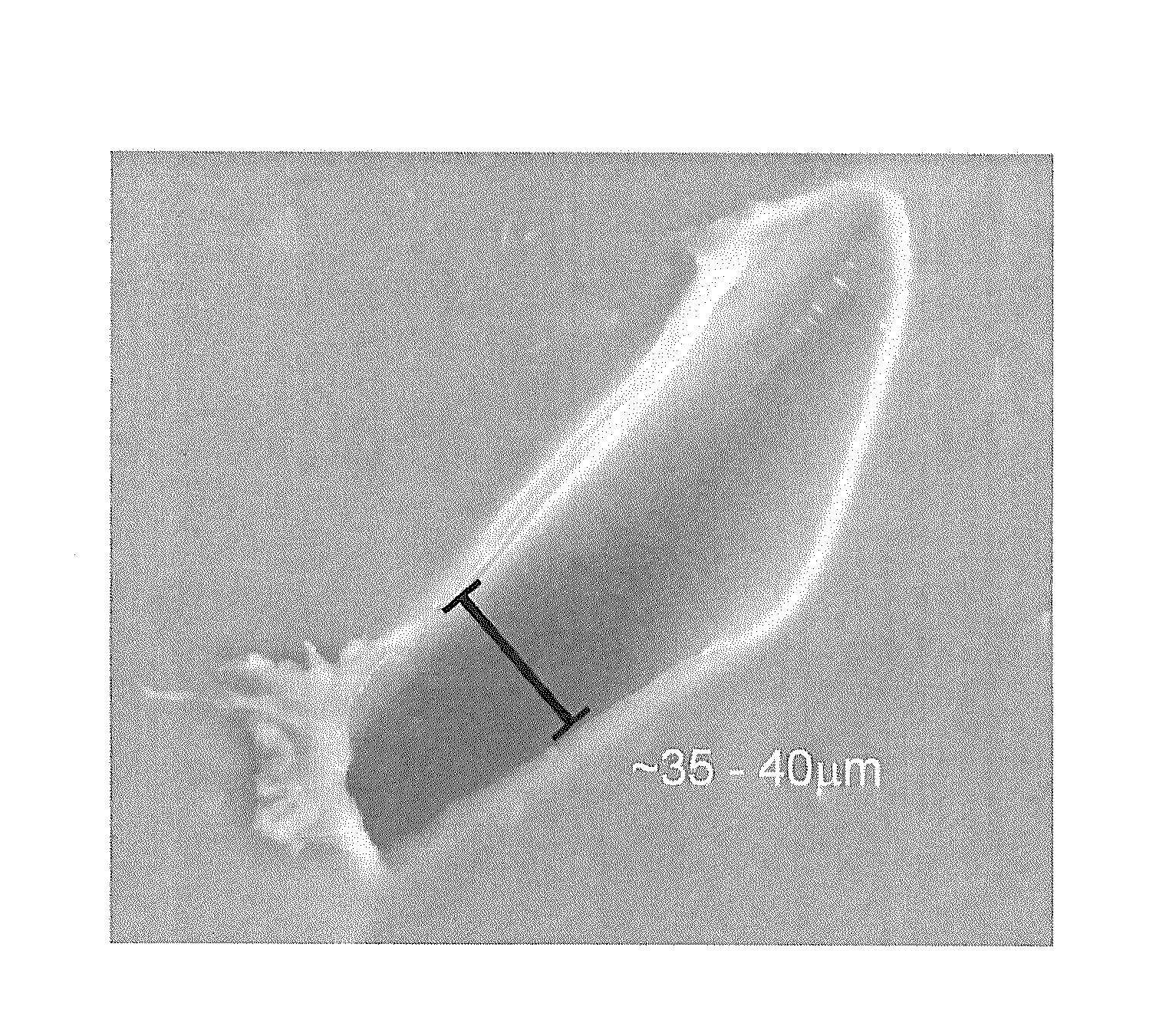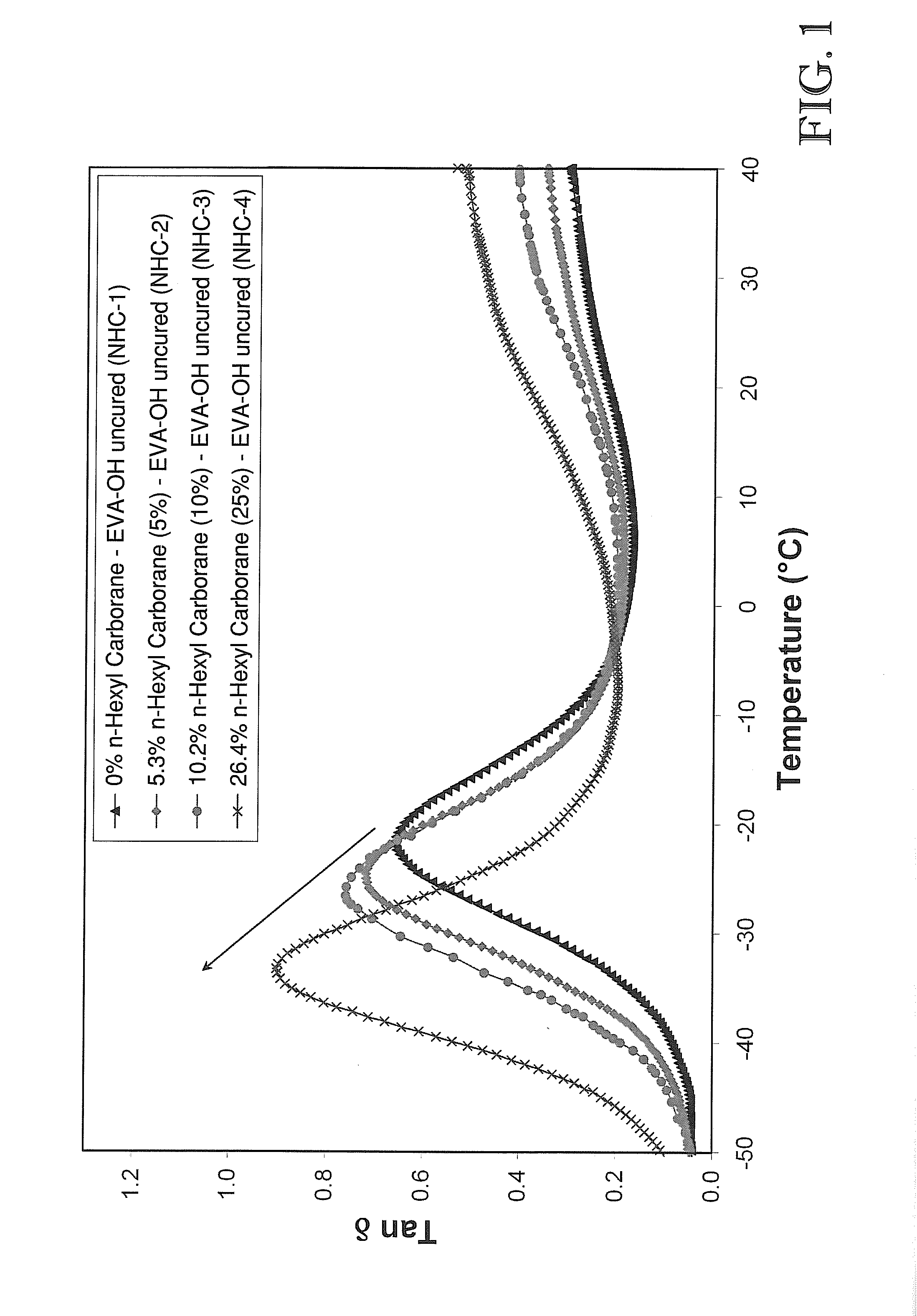Polymers containing borane or carborane cage compounds and related applications
a technology of borane or carborane cage compound and polymer, which is applied in the field of polymer containing borane or carborane cage compound and related applications, can solve the problems that the polymerization or copolymerization of borane and carborane cage compound, either alone or with a host matrix or co-monomer, has not been widely studied
- Summary
- Abstract
- Description
- Claims
- Application Information
AI Technical Summary
Problems solved by technology
Method used
Image
Examples
examples
Nanocomposites in EVA-Based Polymer Matrices (Examples 1-6)
example 1
Preparation of EVA-Based Polymer Matrices
[0099]Three types of polyolefin elastomer systems were prepared to be incorporated with boron cage compounds (“BCC”): uncured polyethylene-co-vinyl acetate) (“EVA”), uncured poly(ethylene-co-vinyl acetate-co-vinyl alcohol) (“EVA-OH”), and poly(ethylene-co-vinyl acetate-co-vinyl alcohol) cured with diphenol-4,4′-methylenebis(phenylcarbamate) (“cured EVA-OH”) via a urethane-type reaction.
EVA
[0100]The EVA polymer matrix, having a composition of 42% vinyl acetate and 58% ethylene was prepared by dissolving two EVA copolymers in toluene followed by precipitation in methanol. The EVA polymer matrix had the following structure:
[0101]The precipitated EVA blend was vacuum dried at 100° C. until solid sheets were formed and all of the solvents were removed. A formulation of 19 parts by weight EVATANE® 33-400 (33% vinyl acetate and 67% ethylene; available from Arkema, Inc.) and 81 parts by weight LEVAMELT® 456 (44% vinyl acetate and 56% ethylene; availa...
example 2
Synthesis of Boron Cage Compounds (“BCC”)
[0105]Four different boron cage compounds were prepared to be combined in various fashion with the above-described polymer matrices. The boron cage compounds included: 11-hexyl carborane, 1,3-di-o-carboranylpropane (“tethered carborane”), 1,2-bis-(hydroxymethyl)-o-carborane (“carborane diol”), and dilithium dodecahydrododecaborate (Li22+[B12H12]2−). Note that the terms “carborane” and “o-carborane” as used in the Examples described herein, are intended to denote 1,2-closo-dicarbadodecaborane (C2B10H12). As used elsewhere, such as the Detailed Description and the Claims included herein, the term “carborane,” as defined above, shall denote a chemical compound consisting of boron, hydrogen, and carbon atoms, exclusive of any pendant group atoms.
n-Hexyl Carborane
[0106]The n-hexyl carborane was prepared as follows. 105 g of decaborane (1.7 mol) was dissolved in 4 L of toluene in a 12-L reaction vessel equipped with a magnetic stir bar and heating ...
PUM
| Property | Measurement | Unit |
|---|---|---|
| Temperature | aaaaa | aaaaa |
| Percent by mass | aaaaa | aaaaa |
| Temperature | aaaaa | aaaaa |
Abstract
Description
Claims
Application Information
 Login to View More
Login to View More - R&D
- Intellectual Property
- Life Sciences
- Materials
- Tech Scout
- Unparalleled Data Quality
- Higher Quality Content
- 60% Fewer Hallucinations
Browse by: Latest US Patents, China's latest patents, Technical Efficacy Thesaurus, Application Domain, Technology Topic, Popular Technical Reports.
© 2025 PatSnap. All rights reserved.Legal|Privacy policy|Modern Slavery Act Transparency Statement|Sitemap|About US| Contact US: help@patsnap.com



